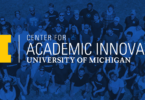Une personnalité inspirante dont nous suivons la trajectoire et dont nous avons parlé à plusieurs reprises, Cathy Davidson, professeure de littérature anglaise devenue chantre de la formation à l’ère numérique, fait encore parler d’elle. Elle a quitté l’Université Duke en début d’été pour s’associer au Graduate Center de la City University de New York (CUNY) et y piloter le projet Futures Initiative de “pédagogie par les pairs”.
« The Futures Initiative is dedicated to creating and inspiring new methods of interdisciplinary and collaborative learning and pedagogy in order to stimulate institutional changes in higher education. Drawing upon and catalyzing the energy of CUNY faculty and students, the Futures Initiative seeks to explore new models for empowering the next generation of college professors to teach and engage in research most effectively in our modern age. The Futures Initiative encourages peer-to-peer pedagogies that support open and connected forms of learning, experimentation, and multimedia publication. Housed at the Graduate Center and extending throughout the CUNY system, the Futures Initiative serves as a model for innovation and aims to inspire public reinvestment in higher education and in our collective future as a society. »
Elle voit son mandat comme de « travailler à transformer la formation supérieure à partir de la classe vers l’extérieur afin de susciter des changements institutionnels majeurs » [traduction libre]. Selon elle, les formateurs universitaires doivent chercher à créer de nouveaux modes d’apprentissage et d’évaluation par les pairs, par projets ou par problèmes, interactifs, interdisciplinaires, qui correspondent au monde actuel et aux multiples façons dont il a été transformé par internet (““peer-driven, interdisciplinary, interactive, project- and problem-based new modes of learning, with appropriate new modes of assessment that match our world” — and the multitude of ways it’s been changed by the internet”).
Jusqu’à présent, elle a lancé une série d’ateliers sur des méthodes innovatrices d’enseignement, d’apprentissage, de développement de la connaissance et de publication. Ainsi, une première rencontre avec un chercheur chez Microsoft était intitulée “Mapping the Universe and Other Small Things” et portait sur l’utilisation du storytelling dans le but de développer un modèle de design d’information qui favoriserait l’apprentissage exploratoire.
Un second abordait de nouvelles formes de mémoires et de thèses:
“What is a Dissertation? New Models, Methods, Media.” It centered on nontraditional dissertations — such as one on comics that was told in comics — and was by all accounts a success. Presented with a series of institutional partners worldwide, the workshop’s Twitter tag,#remixthediss, was retweeted so many times it started trending, Davidson said.
Au semestre d’hiver 2015, elle offrira un séminaire bien particulier, véritable laboratoire d’innovations pédagogiques avec des doctorants de toutes disciplines, mais qui doivent offrir des charges de cours en parallèle de leur recherche:
The vision for the course is to take up to 15 graduate students in as many fields and have them propose pedagogical innovations to share with each other and to test out in their own undergraduate classrooms. Because so many of CUNY’s undergraduate courses are taught by graduate students, the trickle-down effect of the laboratory environment will be immediate.
On a dedicated website, the approximately 300 immediately affected undergraduate students will be able to comment and offer feedback on the project, “with a voice that goes right up to the chancellor,” Davidson said. “It’s incredible, really.” This year’s pilot graduate students will be the mentors for next year’s group, and additional workshops and feedback loops are planned.
Une certaine conception de la technologie et de l’innovation sous-tend son travail. D’une part, la technologie n’est pas la panacée aux problèmes qui assaillent la formation supérieure. “Educators needs to think “with, through and about” 21st-century interactive and connective technologies, just as educational reformers did during the Industrial age, Davidson said. But “this is not a top-down imposition of technology or massive online courses.” D’autre part, les innovations qui fonctionnent doivent être développées par les principaux intéressés, soit les professeurs et étudiants et non des tierces parties avec des intérêts autres que ceux du partage de connaissances.
Sources:
Flaherty, Colleen, « Big Idea, Tall Order », Inside Higher Ed, 14 octobre 2014
Site The Future Initiatives, 2014






